Top 7 Interesting Facts about Harold Godwinson
The final Anglo-Saxon monarch of England was Harold Godwinson. Even though his rule lasted barely nine months, the Battle of Hastings, one of the most ... read more...important episodes in British history, made him famous. A new era of Norman control in England began after Harold was murdered on the battlefield and his army was routed. Keep reading for more interesting facts about Harold Godwinson.
-
The final crowned Anglo-Saxon English king was Harold Godwinson, also known as Harold II (about 1022 - 14 October 1066). In 1045, Harold was made Earl of East Anglia. In 1053, he succeeded his father as Earl of Wessex, and in 1058, he expanded his realms by annexing Hereford. It may be said that Harold had grown to be more powerful than the King of England.
A well-known Anglo-Saxon family with connections to Cnut the Great produced Harold Godwinson. After the passing of his father, Godwin, Earl of Wessex, he rose to prominence as an earl. In 1051, Harold's father, Goodwin, Earl of Wessex, was banished from the realm for defying the king's instructions. Harold and his father consequently departed the country. However, they returned the following year with an army that had gained support from the community. Edward was compelled by this to restore Godwin's earldom. Goodwin was able to reclaim his earldom thanks to this army of followers.
Harold became the most powerful man in England after the King after Godwin, who died in 1053, succeeded him as the Earl of Wessex (the southern portion of the realm). He was also made Earl of Hereford in 1058. This is one of the interesting facts about Harold Godwinson.
Photo: yesterday.uktv.co.uk 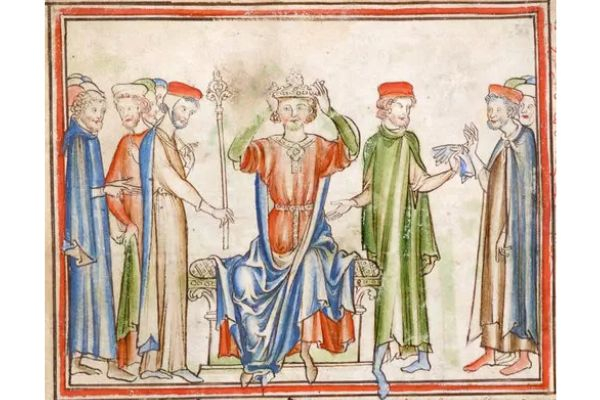
Photo: www.worldhistory.org -
For the sake of this definition, Harold Godwinson was married twice: first to Edith the Fair, which lasted the longest but had questionable legal standing. When Harold was the Earl of East Anglia in the 1040s, he was in a relationship with Edith Swannesha (Edith the Fair). They got married, but the Church did not approve of it. Although most laypeople in England recognized such marriages, they were referred to as more Danico, or "in the Danish fashion.
And once to Edith of Mercia, the earl of Mercia's daughter. At least five of his children were born from the first relationship, while two more may have been from the second (though there have been arguments either way). "For over twenty years, Harold and Edith were married and had six kids together. Harold wed Edith, the Mercian earl's daughter, in January 1066. He had two sons from her (probably twins).
The majority of Harold's sons vanished from history, but one of his daughters, Gytha of Wessex, had a more fascinating outcome. She married Kievan Rus Grand Prince Vladimir II, who later became an ancestor of early Russian tsars. The current royal dynasty of England carries on the line of Harold Godwinson and William the Conqueror through Philippa of Hainaut, the wife of Edward III of England and the grandmother of all those stern dukes who began the Wars of the Roses.
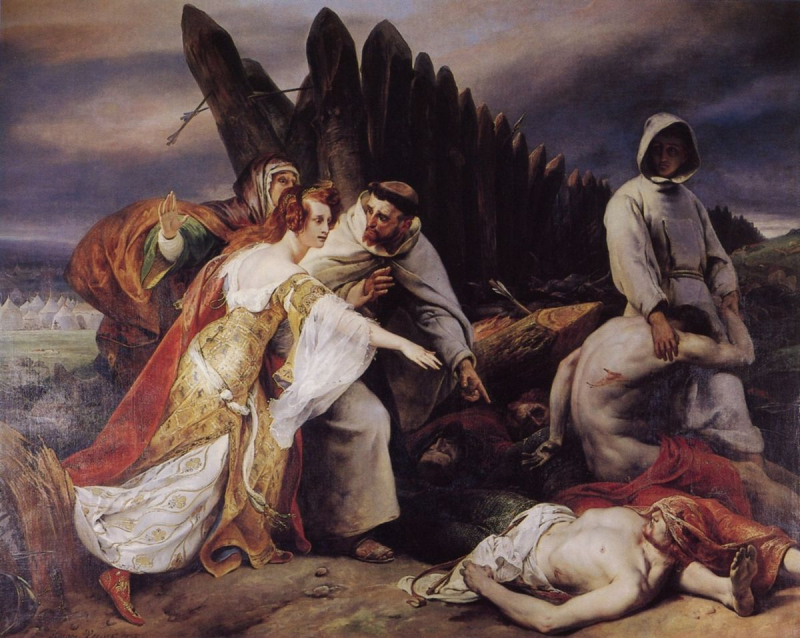
Photo: Wikimedia Common 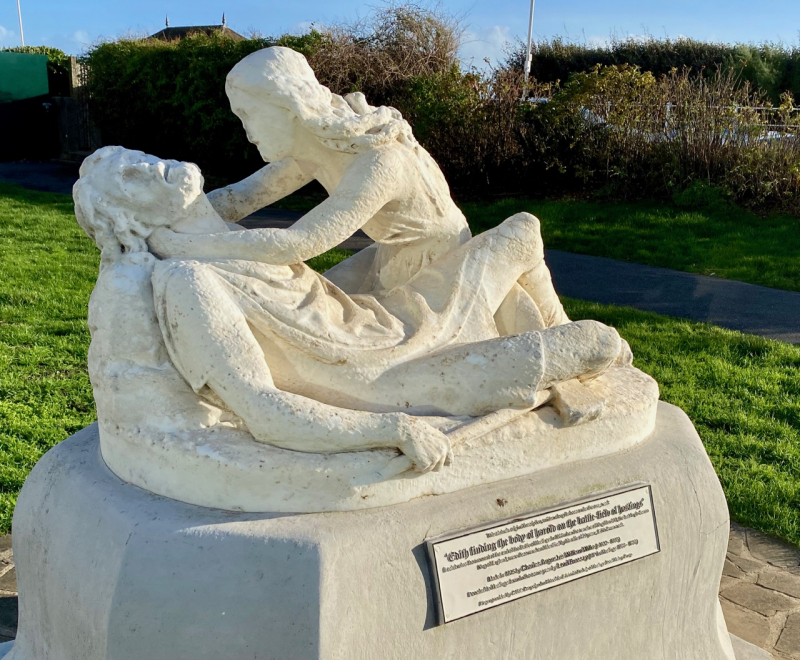
Photo: life-on-the-edge.org -
Tostig, Harold's brother, had the title of earl of Northumbria. He had a conspiracy with Norwegian Harold Haradrada to attack Harold. After learning of this, Harold Godwinson launched his own expedition against his brother and Haradrada. One of Harold Godwinson's lesser-known truths is possibly this. Together with Harold's outlawed brother Tostig, Harald Hardrada of Norway, who also claimed the English throne, invaded Northumbria in September 1066 and routed the local army.
After the death of Edward the Confessor on January 5th, 1066, Harold promptly traveled to London to take the crown, but the Vikings also desired England. Tostig, Harold's brother, traveled to Norway to cause a commotion. Harald Hardrada, the Viking monarch, chose to invade the North while being fully aware that Duke William intended to conquer Sussex. Divide and rule applied in this situation. The Hastings to Rye region, once known as Rameslie, was one of many places the monks of Norman Fecamp Abbey had spies. The Vikings triumphed at the Battle of Fulford on September 20, 1066. Five days later Earl Harold and his army arrived in the North. At the Battle of Stamford Bridge, Hardrada and his own brother Tostig were murdered, and the Viking Army was nearly completely decimated.
After that, Harold marched south to Waltham Abbey, where he spent a week recovering and praying before receiving some worrying news from a messenger. Following news of Duke William's landing on September 28 or 29, Harold was forced to make a quick trip back to the South Coast. On the Feast of St. Michael, the massive Norman fleet of around 770 ships sailed to the coast of England using the Anderida-Pevensey Roman Castle ruins as a landmark. They then sailed along the coast to avoid Pevensey Marshes. It is likely that a broad landing took place close to or at Bulverhythe, spreading to the Brede estuary and Old Romney, where a Norman longboat crew was killed.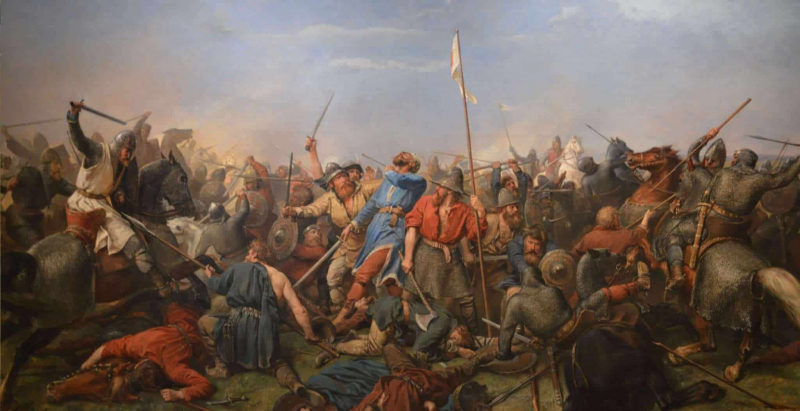
Photo: historic-uk.com 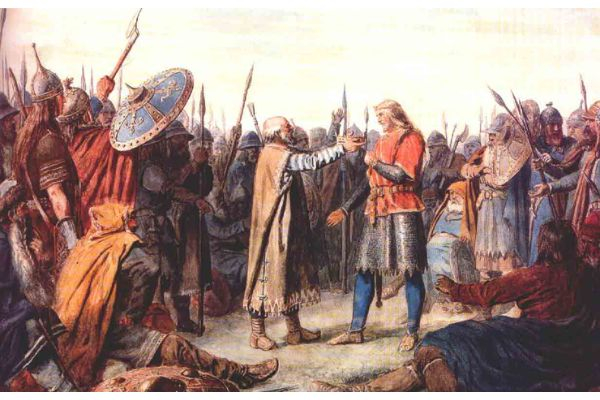
Photo: larsbrownworth.com -
The idea that the legendary Battle of Hastings resulted in the death of Anglo-Saxon King Harold Godwinson by an arrow to the eye is being contested by a new article. The battle, which took place in 1066, was a turning point in the history of England by bringing in the Normans. Chris Dennis makes the case that Harold Godwinson was actually killed by a group of knights, possibly including William the Conqueror, in an article for The Historian, a journal of the Historical Association.
According to the conventional theory, Harold was shot in the face or eye by an arrow. The scene can be mentioned in chronicle reports from as early as 1080 and is a part of the Bayeux Tapestry. Dennis, however, cites other writings, including the Song of the Battle of Hastings by Bishop Guy of Amiens, which was published a year after the battle, and a 12th-century work by a historian by the name of Wace, which claim that during the pivotal moment of the battle, William gathered a number of knights and charged at the Anglo-Saxon king. When they got to Harold, they killed him by hacking.
According to Dennis, the legend of the arrow in the eye may have been manufactured by Monarch William's court as propaganda: "For Duke William, it was an easy way for the king to have met his end. Harold's passing would have been directly attributable to God's will if he had been struck down by a fatal arrow.
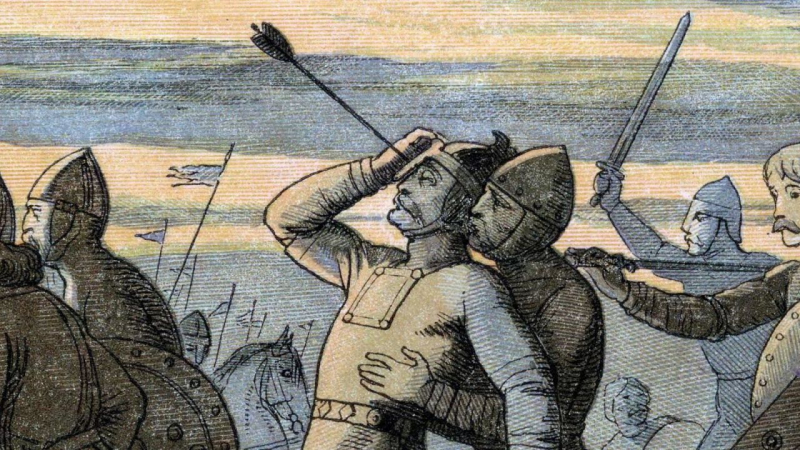
Photo: yesterday.uktv.co.uk 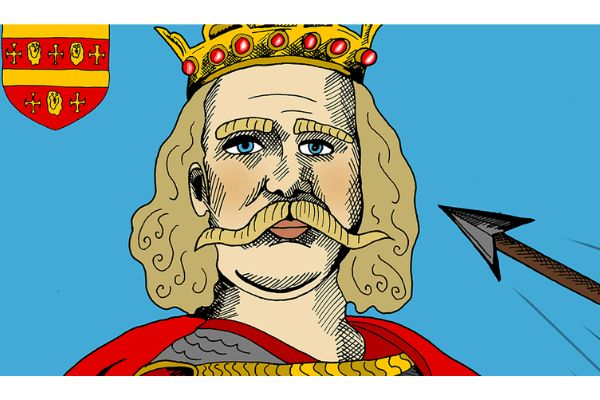
Photo: metro.co.uk -
When Godwin Earl of Wessex passed away in 1053, Harold Godwinson, a wealthy and influential man, gained money and titles from him. King Edward the Confessor quickly came to rely on Harold Godwinson because of his unwavering commitment to serving the monarch throughout his life. Then, after Edward's death in 1066, Harold was installed as monarch relatively soon. Harold Godwinson's reign would not survive long, though, as history now bears the wounds. The Last Anglo-Saxon King Of England is also one of the interesting facts about Harold Godwinson.
Despite these other assertions, Harold II was always the choice since he was a proven commander and an excellent general. He already had a strong pedigree from his ancestors' history as well as the support of important nobility. Harold II had never been more prepared because he also understood how the realm operated.
The name "Anglo-Saxon" alludes to immigrants from the German states of Saxony and Angeln who came to Britain following the fall of the Roman Empire in about 410 AD. From the fifth through the eleventh centuries, they ruled over Great Britain. The death of Harold Godwinson, the final Anglo-Saxon monarch of England, brought an end to their dynasty. The Anglo-Saxon kings of England were already dead, banished, or among the peasants by the time William the Conqueror passed away in 1087.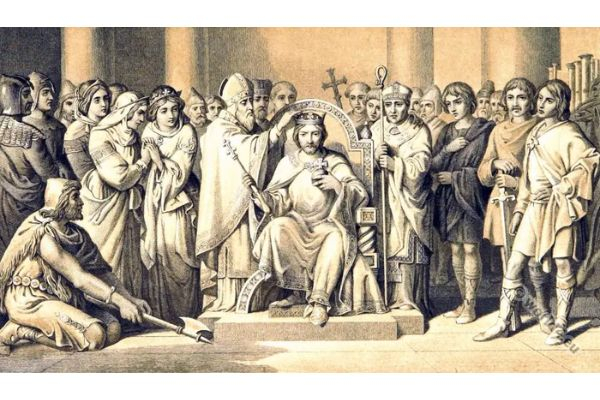
Photo: world4.eu Video: Real Royalty -
Early in the summer of 1064, Harold Godwinson traveled to Normandy on behalf of King Edward in order to deliver an unidentified message to William of Normandy. On his way to France, Harold got into trouble at sea and ended up on the Normandy coast. Harold was sent by Edward to Normandy to confirm Duke William as the king's heir, according to historical Norman sources, particularly the Bayeux Tapestry. Guy I of Ponthieu, one of William's vassals, shipwrecked Harold while he was traveling and took him, prisoner.
What transpired on this journey is a subject of intense historical controversy. When Edward the Confessor, who was towards the end of his life and childless, passed away, William, Duke of Normandy argued that Harold had made an oath on sacred relics that he would back William's claim to the throne.
On the Normandy shore in 1064, Harold was shipwrecked. Harold is thought to have been coerced into taking an oath by William, Duke of Normandy, who wanted to prove his claim that he should succeed the childless Edward. However, other historians think the Normans made up this tale to support their invasion of England.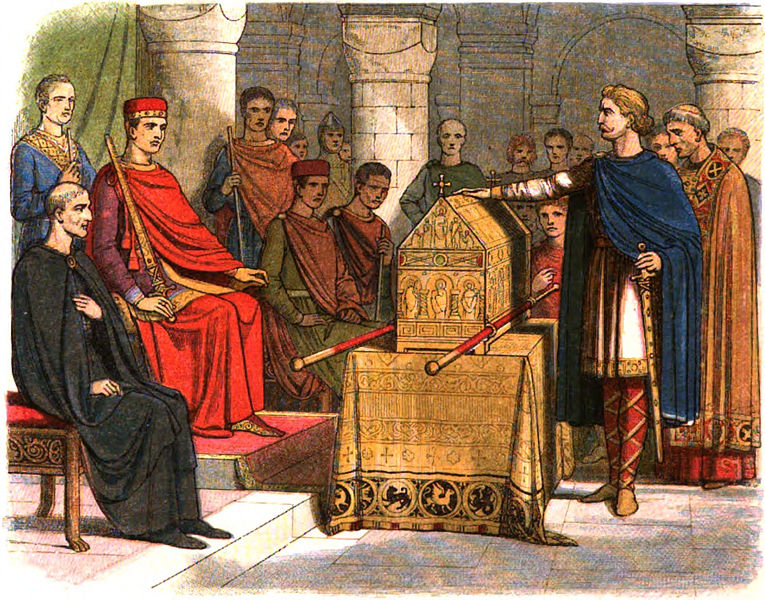
Photo: mercedesrochelle.com 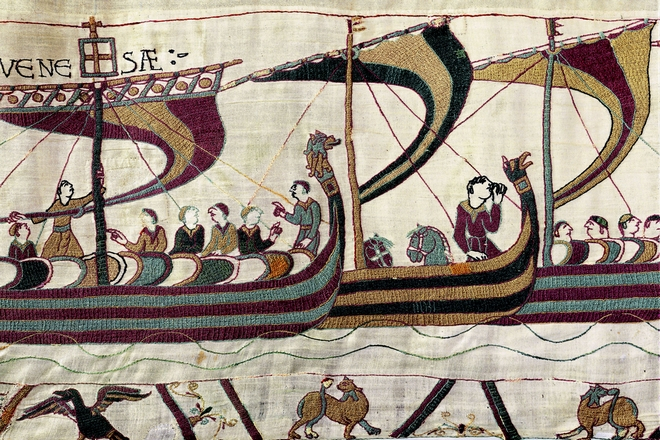
Photo: bayeuxmuseum.com -
The lack of an obvious heir to the kingdom served as a bargaining chip for the entire time Edward the Confessor was in power. After a disagreement with Godwine, the earl of Wessex and the most powerful man in England, in 1051, Edward likely chose his cousin William to be his heir. Harold, Godwine's son who succeeded him as Earl of Wessex after his father's death in 1053, spent the following ten years strengthening his position and gaining the respect of the nobility and clergy. Harold thereafter swore an oath of fealty to William and pledged to support William's claim to the English throne, according to Norman's chronicles, which include the Bayeux Tapestry. However, on his deathbed (January 5, 1066) Edward gave Harold the throne, and the following day, Harold was crowned king with the support of the English nobility.
On the Normandy shore in 1064, Harold was shipwrecked. He was taken prisoner there, but Duke William freed him. William had Harold with him while he faced Conan II, Duke of Brittany, who was his foe. Harold received arms and weaponry from William, who also knighted him. According to Norman sources, Harold took an oath to support William's claim to the English crown. Harold’s Oath was later used by William (the Conqueror) to win the approval of the Pope for his invasion of England.
Photo: churchtimes.co.uk 
Photo: great-castles.com




























